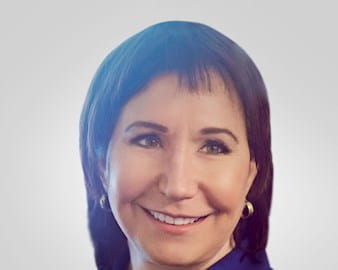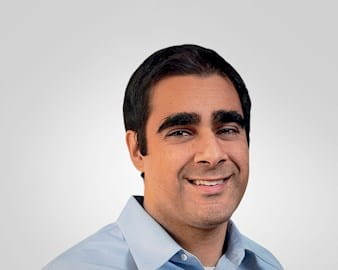
How to gain credibility in the marketplace, respond to challenges in a product launch, and streamline adoption of new technologies.
- By
- January 10, 2017
- Healthcare


The Challenge: In the early 2000s, a 50 percent failure rate for mental-health-drug trials meant the Food and Drug Administration approved few new treatments for psychiatric diseases, says Amy Fershko Ellis, ’80, who cofounded MedAvante in 2002 to analyze how the pharmaceutical industry tested psychiatric drugs. Her team found the root cause of trial failure was measurement variability and investigator bias in subjective assessments of trial participants. MedAvante created a holistic methodology to improve testing, but the company encountered industry resistance as outsiders looking to change the way clinical trials had long been conducted.
“We benefited from the halo we had from our success.”
The Strategy: Ellis applied universal principles to product development. Because drug trials are conducted in various parts of the country and around the world, companies pay investigators to find, evaluate, and enroll patients. But differences between investigators result in unreliable outcomes. MedAvante, however, proposed a way to control and centralize the evaluation process, using the internet to connect remote clinicians to patients to ask the same questions in the same way and characterize patient responses identically. MedAvante also digitized the process and made it cloud based, so researchers would have instant results.
To build credibility, MedAvante enlisted key medical and scientific leaders who believed in their strategy and concept—mostly academics who didn’t have an economic bias. In 2005, MedAvante’s first two trials involved drugs that had previously failed. The new methodology showed significant results demonstrating the drugs worked, and the treatments were approved. Even with those results, industry skepticism of MedAvante’s nontraditional approach meant slow methodology adoption. But by 2009 the psychiatry industry embraced the system, and MedAvante dropped the 50 percent trial failure rate to the low teens.
In 2014, MedAvante expanded the platform for use in all medical drug trials, using new technology to enhance data quality for drug developers. New services were quickly adopted beyond psychiatry, especially in studies of Alzheimer’s disease, where the company now holds a leadership position. “We benefited from the halo we had from our success,” Ellis said.
The Takeaway: A great strategy can work in all sectors, even if implemented by industry outsiders. If the strategy and results are sound, don’t be discouraged by naysayers.

The Challenge: Cancer patients who receive a peripherally inserted central catheter line—an intravenous line typically inserted into a vein in the upper arm to deliver treatments—are usually told to wear a tube sock over the line to protect it. In 2014, Chaitenya Razdan, ’11, and his cofounder, Susan Jones, sought to make a sleeve that was fashionable, and more comfortable, for patients. They did some initial prototype testing to tweak the design, and based on initial results, they ordered their first large inventory production when a hospital expressed interest a year later. However, the purchaser discovered a major problem with the design others did not mention during testing, which could have sunk the start-up company.
“It’s incredibly important to get the product right.”
The Strategy: Immediately, Razdan and Jones partnered with a nurse from the hospital to understand the problem: the fabric pilled during use. Pilling creates small balls of material, which got stuck to the dressing tape on catheter lines, causing the dressing to lose adhesiveness. Razdan and Jones wore the sleeves daily to test how they performed, and they evaluated a variety of dressings to determine whether the dressing or the sleeve was causing the problem. They also collaborated closely with their manufacturer to figure out the issue. As they worked through the new testing, they kept in contact with customers to get additional feedback.
Two months into the new test, they discovered that washing the sleeves eliminated the pilling. “It’s incredibly important to get the product right,” Razdan said. “But it’s also crucial to find the right partner who is willing to work with you on the development and build a lasting relationship.” Care+Wear has since expanded to create other healthwear clothing accessories.
The Takeaway: Take care when launching a new product—ensure that testing is rigorous, ask questions, and keep communication going, especially if you encounter challenges along the way.

The Challenge: While over the years digital tools have been introduced to streamline presurgery and postsurgery processes, the operating room itself is still largely managed on paper. During surgery, workflow and efficiency often take a backseat to traditional methods and the processes required for performing the procedure safely. However, increasing variability and complexity of cases without detailed management can lead to prolonged times in the operating room and greater cost. In 2013, Jennifer Fried, ’15, and Dr. Alex Langerman, a head-and-neck surgeon and researcher at the University of Chicago Medical Center, began working on ways to organize and bring transparency to intraoperative activity.
“You ask, ‘How do you make the OR lean?’”
The Strategy: Fried realized the solution came down to a classic business operation problem. “You ask, ‘How do you make the OR lean and give team members access to the right information at the right time?’” she said. Fried and Langerman developed software that codified surgery into steps and mapped out digital workflows for each team member. The software also tracks activity, allowing surgical teams and administrators to see OR activity in real time. For the venture to succeed, the software first required acceptance by surgeons. “They’re the kings and queens of the operating room,” Fried said. “Nothing gets in without their approval.” To that end, the software interface needed to be user friendly for operating room technicians and nurses who were preparing the room for surgery. Additionally, hospital administrators evaluated the performance of the software to judge the financial benefit to their institutions.
With Langerman’s established research on operating-room workflow and efficiency as a base, their software program ExplORer Surgical took data and feedback from surgeons, nurses and technicians, and administrators. Fried and Langerman also hired seasoned technology executive Eugene Fine as CTO to build a platform to make the software suitable for use across hospital systems and develop analytics on the data captured. Outside of the University of Chicago, four other hospitals are starting to use the system. “We continue to get feedback from our hospital users on product features and additional value propositions,” Fried said. “The company is still in its early days.”
The Takeaway: Reaching out to stakeholders and potential customers to understand their individual and group needs will refine product development and encourage product adoption.

The pharma executive at Pfizer is serious about changing lives and fostering new breakthroughs.
The Book of Booth: Andy Schmeltz, ’97
When the pandemic closed offices, Sheila Arora, ’11, took an opportunity to turn full time to her art.
Balancing Logic with Intuition
The cofounder of Nigerian startup Hello Tractor gives five practical tips for alumni looking to explore Africa’s economic opportunities.
One Entrepreneur's Advice on Working in Africa